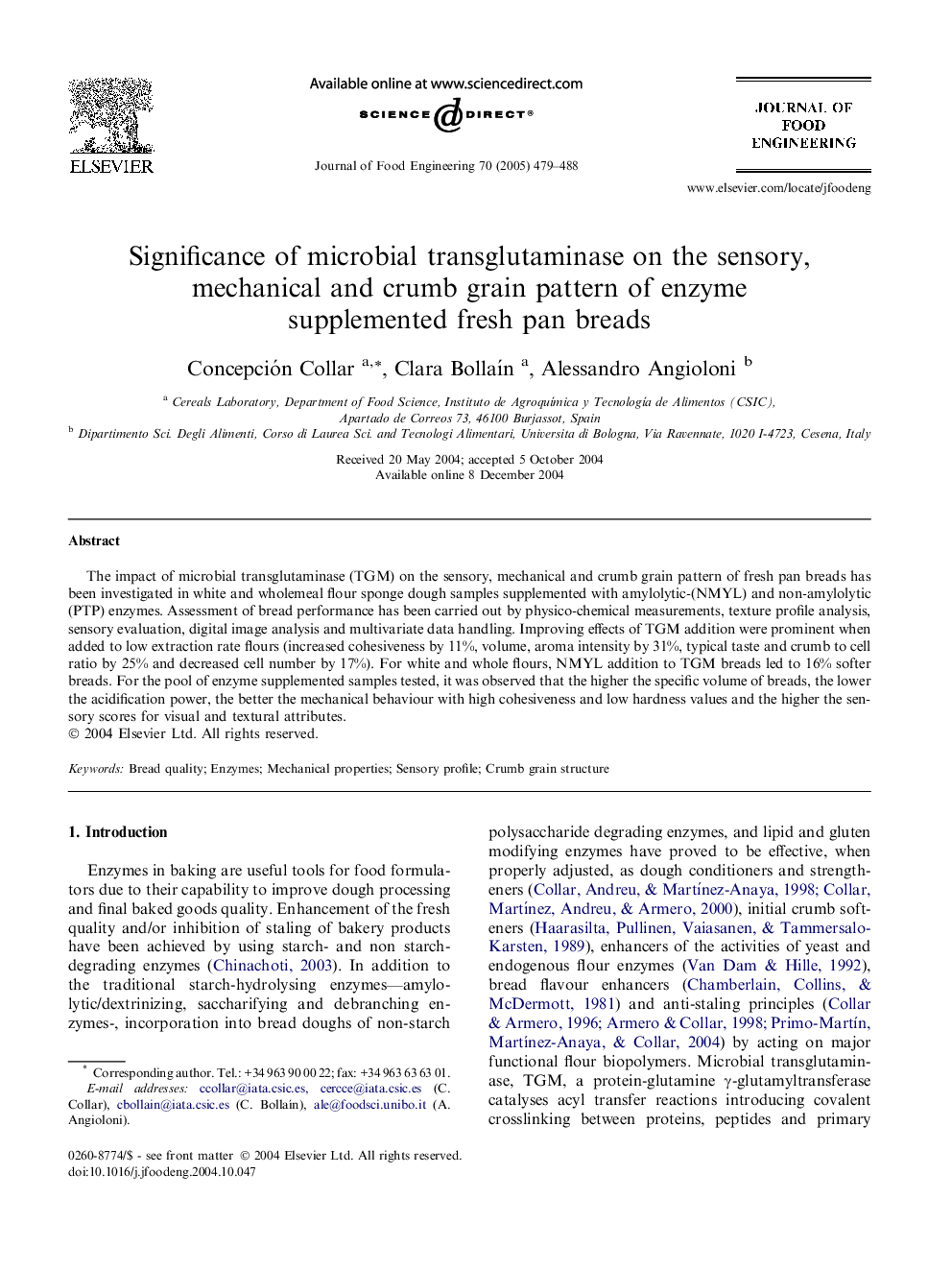| Article ID | Journal | Published Year | Pages | File Type |
|---|---|---|---|---|
| 9635581 | Journal of Food Engineering | 2005 | 10 Pages |
Abstract
The impact of microbial transglutaminase (TGM) on the sensory, mechanical and crumb grain pattern of fresh pan breads has been investigated in white and wholemeal flour sponge dough samples supplemented with amylolytic-(NMYL) and non-amylolytic (PTP) enzymes. Assessment of bread performance has been carried out by physico-chemical measurements, texture profile analysis, sensory evaluation, digital image analysis and multivariate data handling. Improving effects of TGM addition were prominent when added to low extraction rate flours (increased cohesiveness by 11%, volume, aroma intensity by 31%, typical taste and crumb to cell ratio by 25% and decreased cell number by 17%). For white and whole flours, NMYL addition to TGM breads led to 16% softer breads. For the pool of enzyme supplemented samples tested, it was observed that the higher the specific volume of breads, the lower the acidification power, the better the mechanical behaviour with high cohesiveness and low hardness values and the higher the sensory scores for visual and textural attributes.
Related Topics
Physical Sciences and Engineering
Chemical Engineering
Chemical Engineering (General)
Authors
Concepción Collar, Clara BollaÃn, Alessandro Angioloni,
